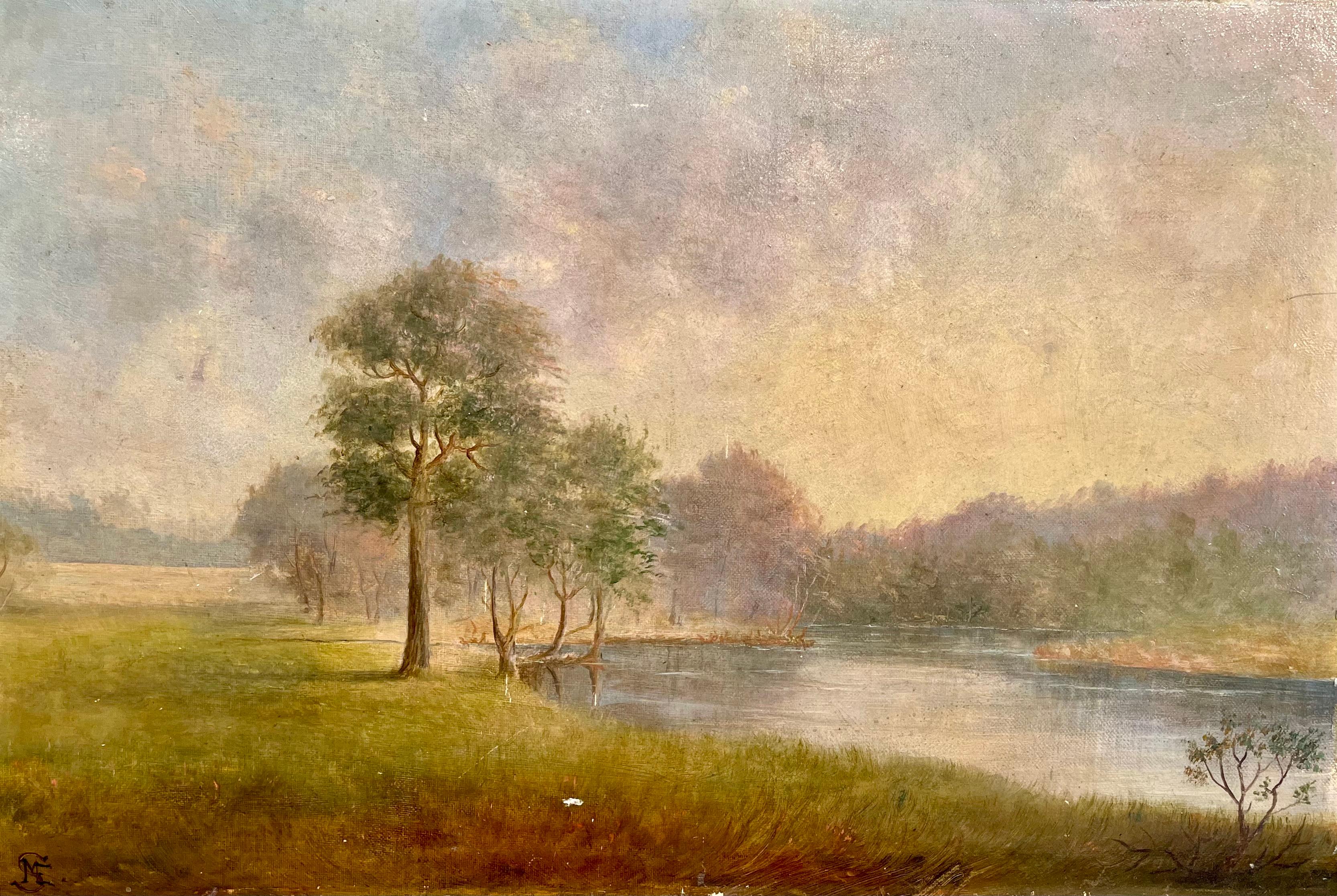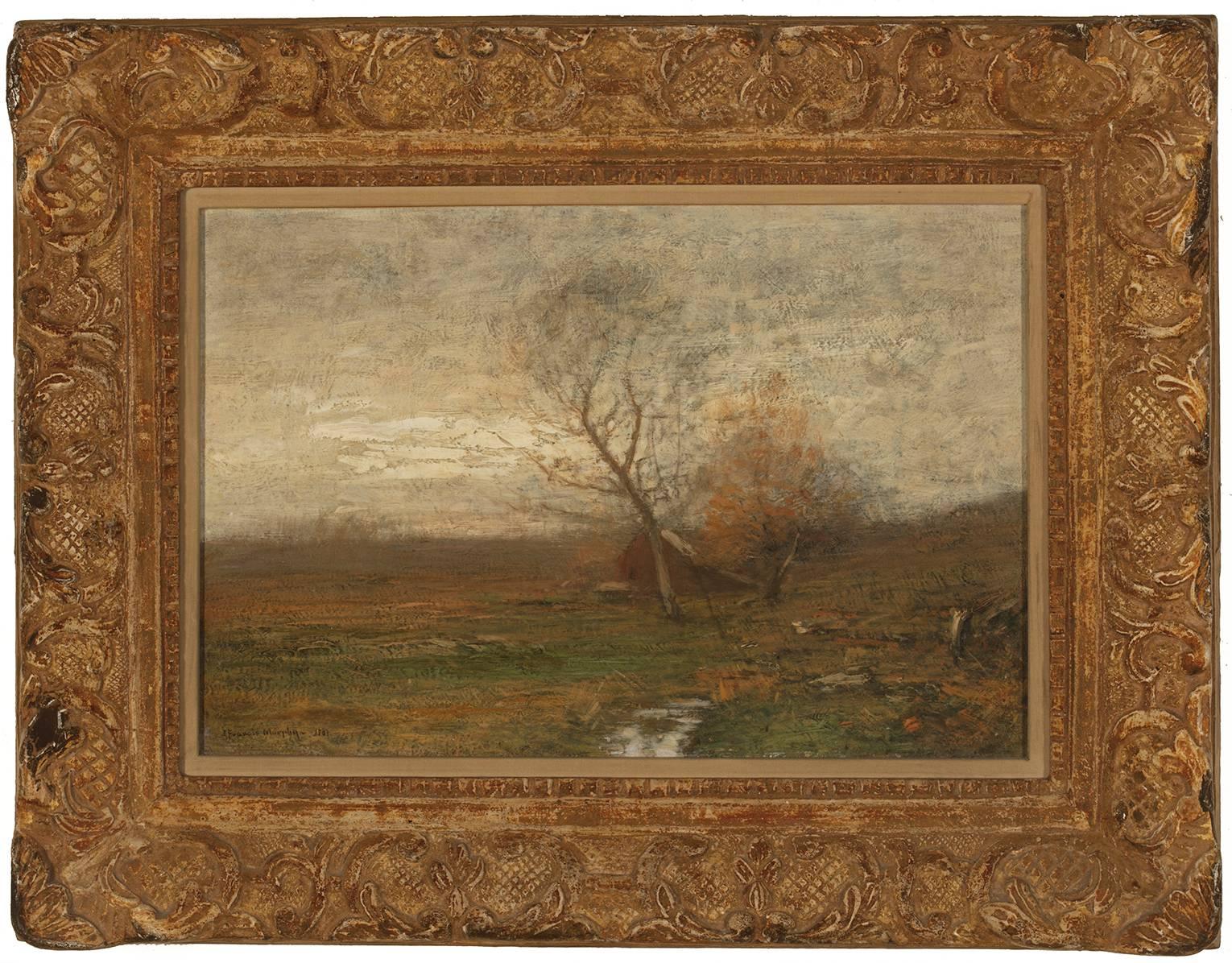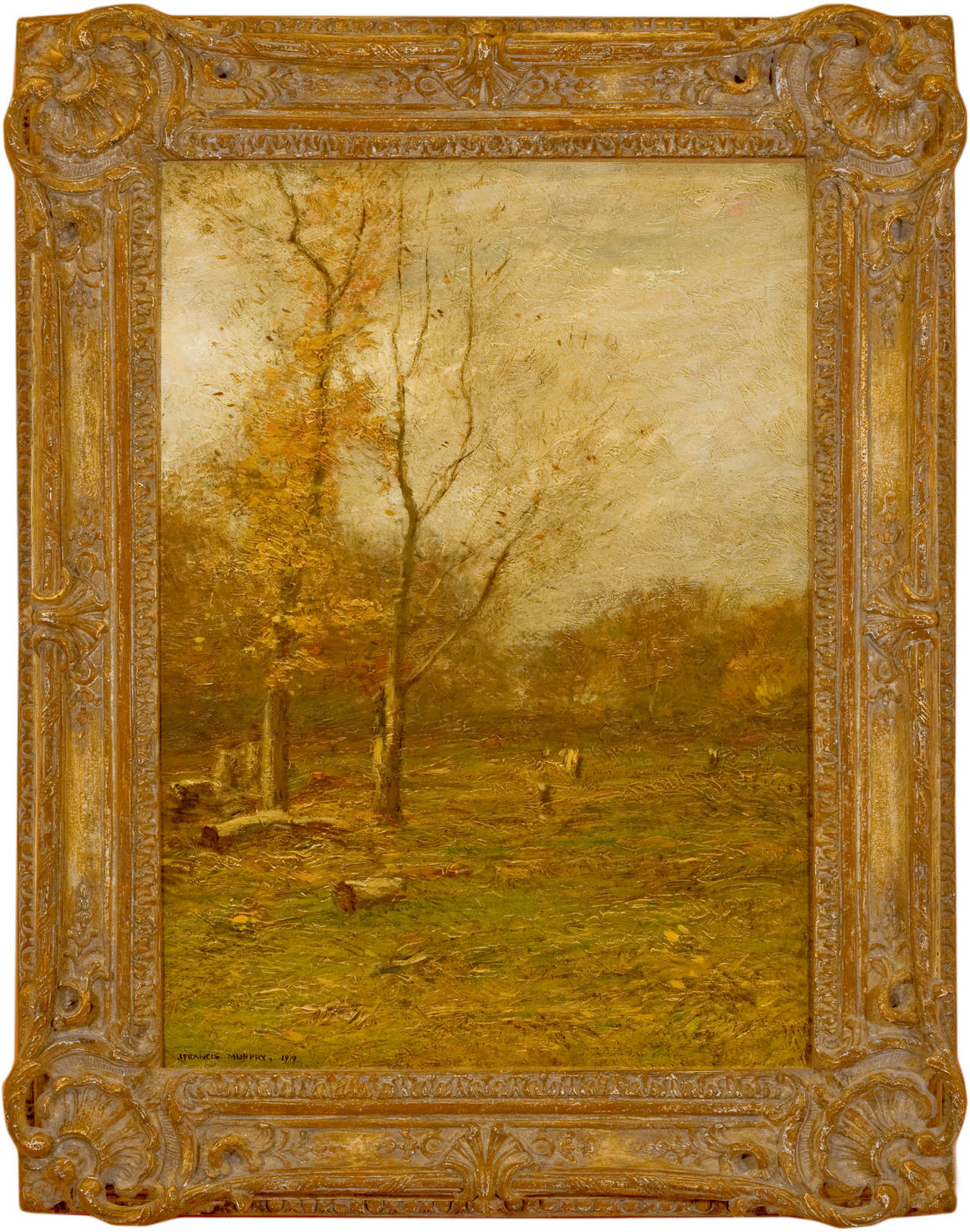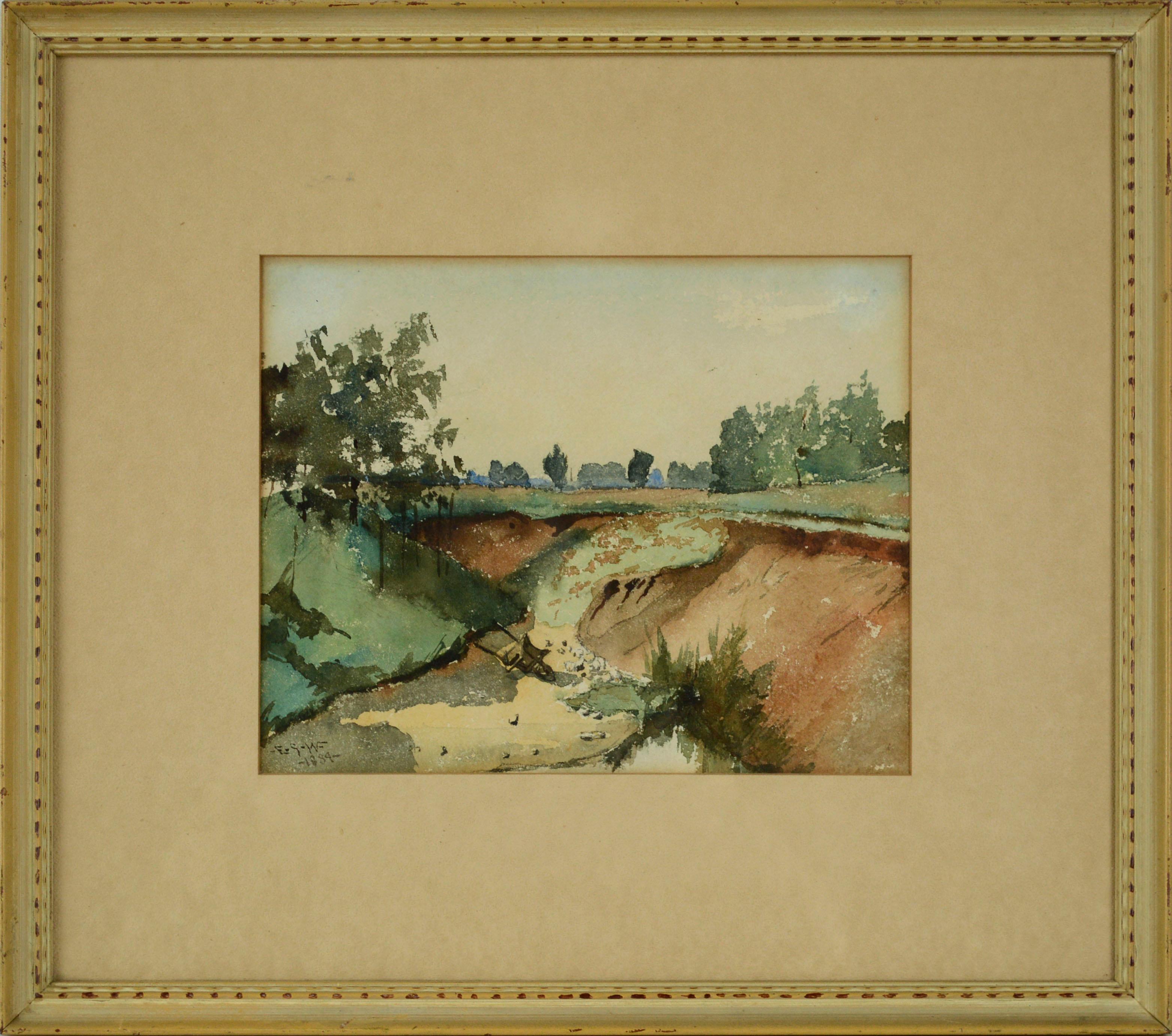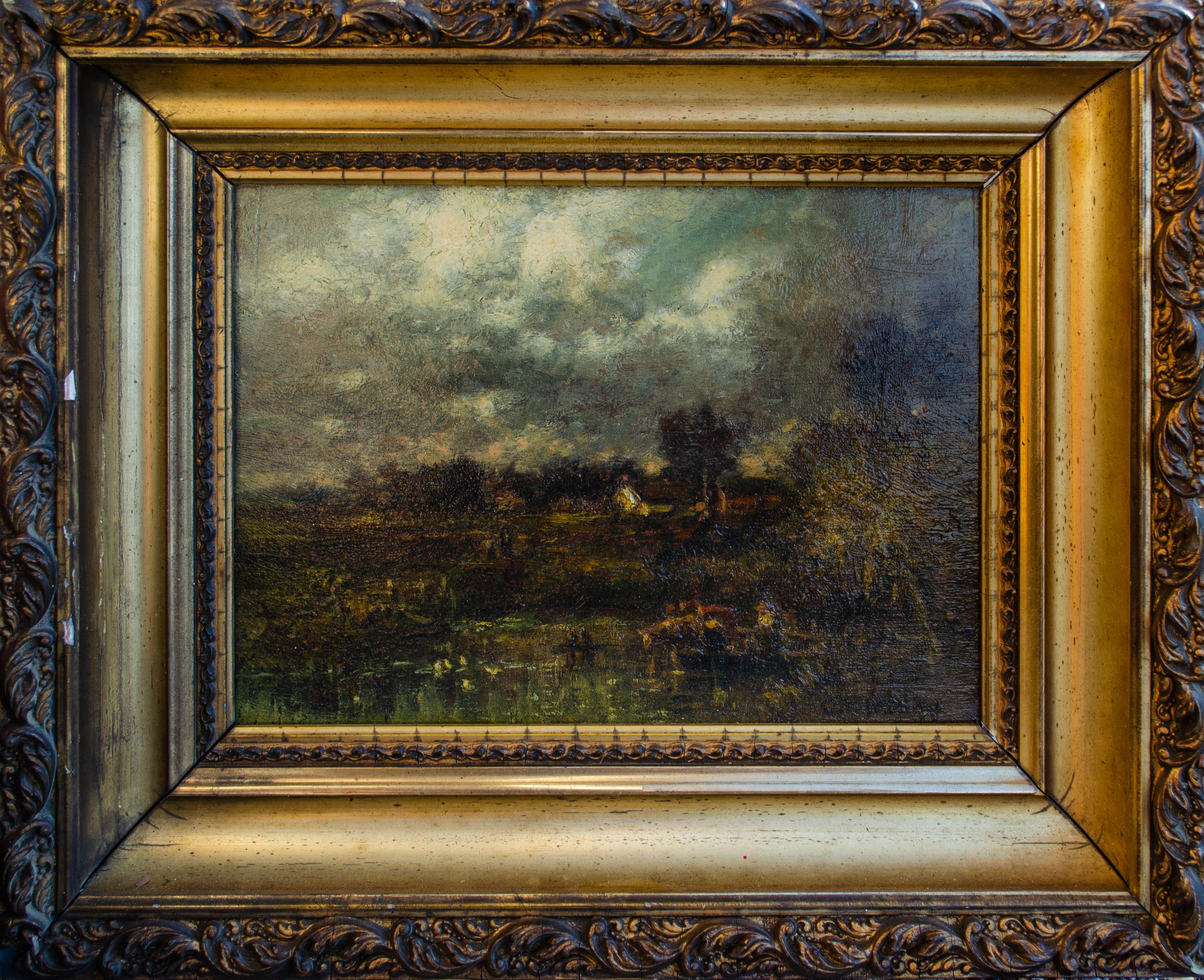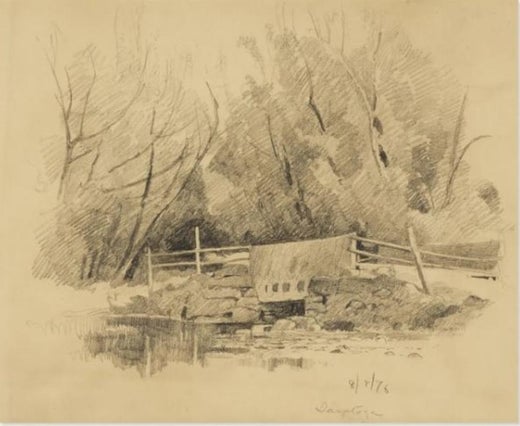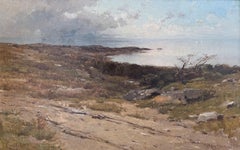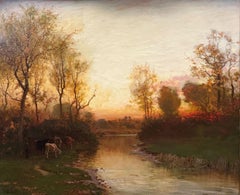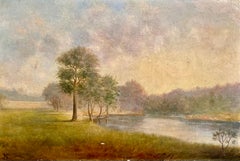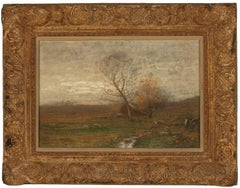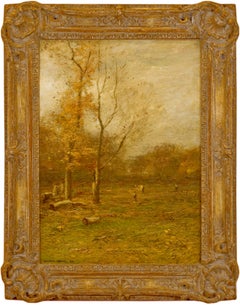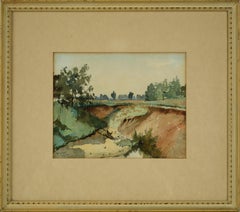John Francis Murphy"Saratoga, " John Francis Murphy, Hudson River School, Tonalism1876
1876
About the Item
- Creator:John Francis Murphy (1853-1921, American)
- Creation Year:1876
- Dimensions:Height: 16 in (40.64 cm)Width: 18 in (45.72 cm)
- Medium:
- Movement & Style:
- Period:
- Condition:
- Gallery Location:New York, NY
- Reference Number:1stDibs: LU184129924532
John Francis Murphy
Not one for dramatic statements and bold colors, John Francis Murphy preferred to use natural, muted tones in his warm, lyrical depictions of tree-lined country roads and mossy-green pastures. While the likes of George Inness as well as the Hudson River School informed the prolific American landscape painter's early pieces, the loose brushstrokes that define his later work owe to the influence of the French artists of the Barbizon School.
Murphy was born in Oswego, New York — a small town adjacent to Lake Ontario. In his late teens, he left New York and headed to Chicago, where he painted billboards and theater sets. His job in Chicago didn't last long, and Murphy soon found himself back east. He spent several summers teaching in Orange, New Jersey, while also operating out of an art studio in New York City that he opened in 1875.
While he shifted from painting rural New Jersey to depicting the mountains of southeastern New York State — and worked initially with watercolors before focusing solely on oil painting — Murphy remained a landscape painter throughout every phase of his career and he would eventually emerge as a leading figure of the American Tonalists. The primarily self-taught Murphy conveyed tranquility and stillness in his evocative paintings of farms, wooded scenes and mountains, celebrating life beyond the frenzied hustle and bustle of metropolitan areas.
Though most found him to be friendly and approachable, Murphy often preferred to work in seclusion, away from the distraction of others. He married painter Adah Clifford Smith in 1883 and the pair visited France toward the end of the decade. In 1887, he built a studio in Arkville, New York. He lived there and painted the Catskill Mountains throughout the summer and fall seasons that year and during those that followed, returning to Manhattan periodically to show his work.
A painting of Murphy’s appeared in the annual exhibition staged by the National Academy of Design, in New York City, in 1876. He earned comparisons to celebrated French painter Jean-Baptiste-Camille Corot, and the numerous prizes he was awarded over the course of his career include those won at Chicago's World’s Columbian Expo in 1893, the American Watercolor Society in 1894 and San Francisco's Panama-Pacific International Expo in 1915. Murphy’s works are held in collections of the Smithsonian American Art Museum and elsewhere.
Find original John Francis Murphy paintings on 1stDibs.
- ShippingRetrieving quote...Shipping from: New York, NY
- Return Policy
More From This Seller
View All1880s Hudson River School Figurative Paintings
Canvas, Oil
1880s Hudson River School Landscape Paintings
Canvas, Oil
1870s Hudson River School Landscape Paintings
Canvas, Oil
1920s Hudson River School Landscape Paintings
Canvas, Oil
Early 20th Century Tonalist Landscape Paintings
Canvas, Oil
Early 1900s Academic Landscape Paintings
Oil, Canvas
You May Also Like
Mid-19th Century Hudson River School Landscape Paintings
Canvas, Oil
Early 1900s Tonalist Landscape Paintings
Canvas, Oil
1910s Tonalist Landscape Paintings
Oil, Canvas
1880s American Impressionist Landscape Drawings and Watercolors
Paper, Watercolor
Early 1900s Tonalist Landscape Paintings
Canvas, Oil
Early 20th Century American Impressionist Landscape Paintings
Canvas, Foam, Oil
